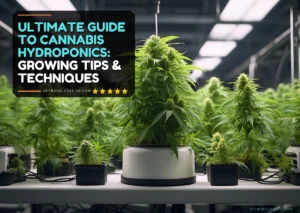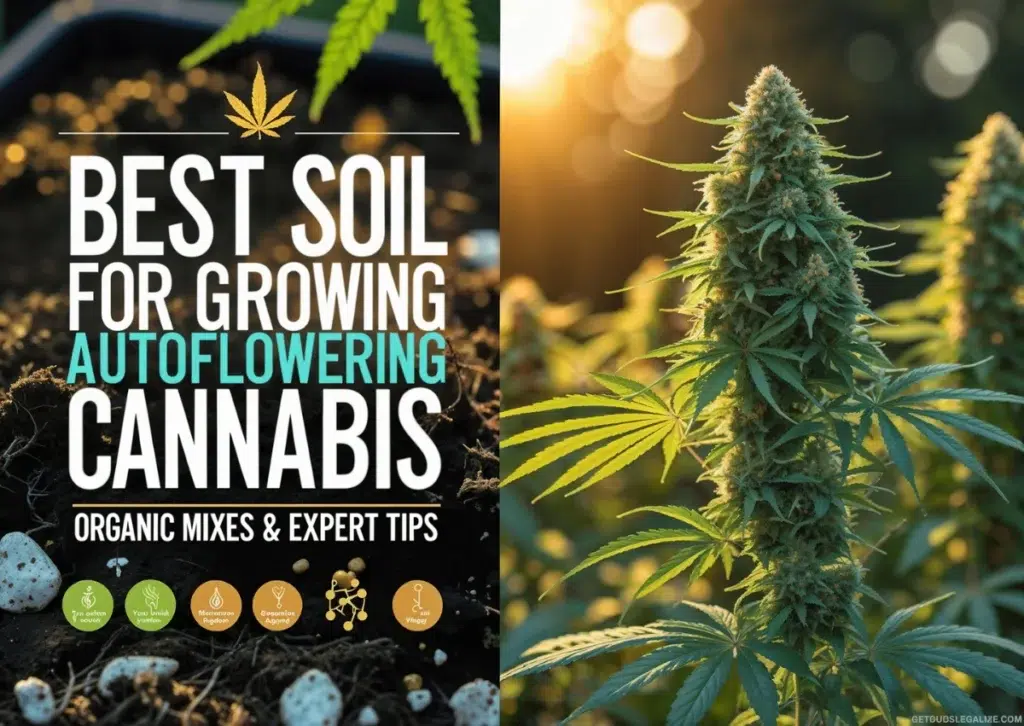12 Critical Mistakes To Avoid When Growing Hydroponic Marijuana
Growing hydroponic marijuana can be an exciting and rewarding experience. However, it requires careful attention to detail and proper management to maximize yields and produce high-quality buds. Whether you’re a beginner or an experienced grower, avoiding common mistakes is key. In this blog post, we will explore 11 common mistakes you should avoid when growing marijuana with the hydroponic system.
Correlated article:
1. Overlooking pH Management
Maintaining the correct pH is paramount in hydroponic marijuana cultivation. Marijuana plants grow and thrive in a slightly acidic environment, with pH levels between 5.5 and 6.5 being optimal for nutrient uptake. Deviating from this range can lead to nutrient lockout, where essential nutrients become unavailable to the plants, resulting in stunted growth and poor yields.
To avoid pH-related issues, invest in a reliable pH testing pen and regularly monitor the pH of your nutrient solution. Adjust the pH as needed using pH up or pH down solutions to keep it within the optimal range. Ensure that your pH testing pen is properly calibrated to obtain accurate readings.
2. Estimating EC Levels
Electrical conductivity (EC) measures the concentration of salts and minerals in the nutrient solution. Maintaining correct EC levels is critical to providing plants with an adequate amount of nutrients. However, guessing EC levels without proper measurement can lead to over- or underfeeding of plants, resulting in nutritional deficiencies or toxicity.
Invest in an EC pen to accurately measure the electrical conductivity of your nutrient solution. This will help you determine whether the nutrient solution is too weak or too strong and will allow you to make any necessary adjustments. Keep in mind that different cannabis strains may have different nutritional needs, so it is essential to carefully monitor EC levels and adjust accordingly.
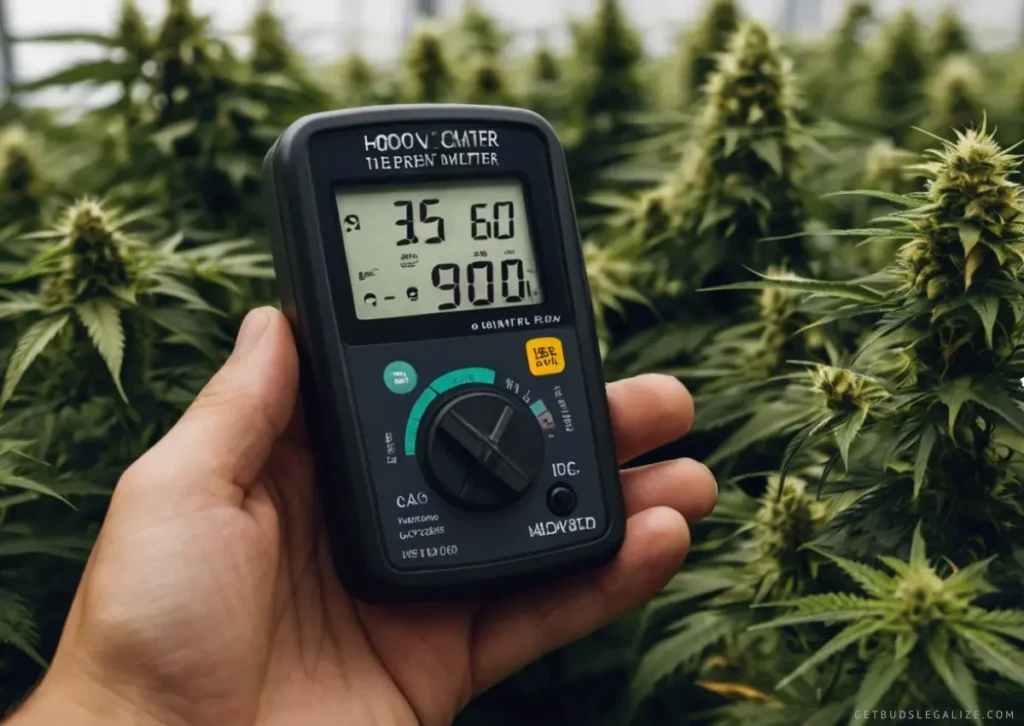
3. Poor Oxygenation
Proper oxygenation of the nutrient solution is essential for healthy root development in hydroponic systems. Without adequate oxygen levels, roots can suffocate, causing root rot and poor nutrient absorption. To ensure sufficient oxygenation, incorporate air stones or pumps into your hydroponic system to effectively aerate the nutrient solution.
Regularly check oxygen levels in the nutrient solution and adjust aeration equipment as needed to maintain optimal oxygenation. Also, avoid overcrowding your hydroponic system, as this can restrict airflow to the roots and exacerbate oxygenation problems.
4. Improper Placement of Drip Stakes
Drip irrigation systems are valuable tools for automating the watering process in hydroponic systems. However, failure to properly place drip stakes can lead to uneven watering and nutrient distribution, compromising plant health and yield.
Make sure the driplines are inserted properly into the growing medium to a depth of 3 to 4 inches. It is important to regularly check your grow space and inspect the stakes to identify and address any issues as soon as possible. This will help ensure that your plants grow strong and healthy.
5. Absence of Timers for Nutrient Solution Delivery
Consistency is key in hydroponic gardening and the use of timers for dispensing the nutrient solution is essential to maintaining optimal growing conditions. Without timers, manual fertilization programs can lead to uneven nutrient uptake and stress to plants.
Invest in a reliable segment timer to automate nutrient solution delivery, aiming for 2-5 feedings per day depending on the growth stage and medium used. It is advisable to have a spare timer on hand to avoid interruptions in the feeding cycle and ensure continuous plant growth.
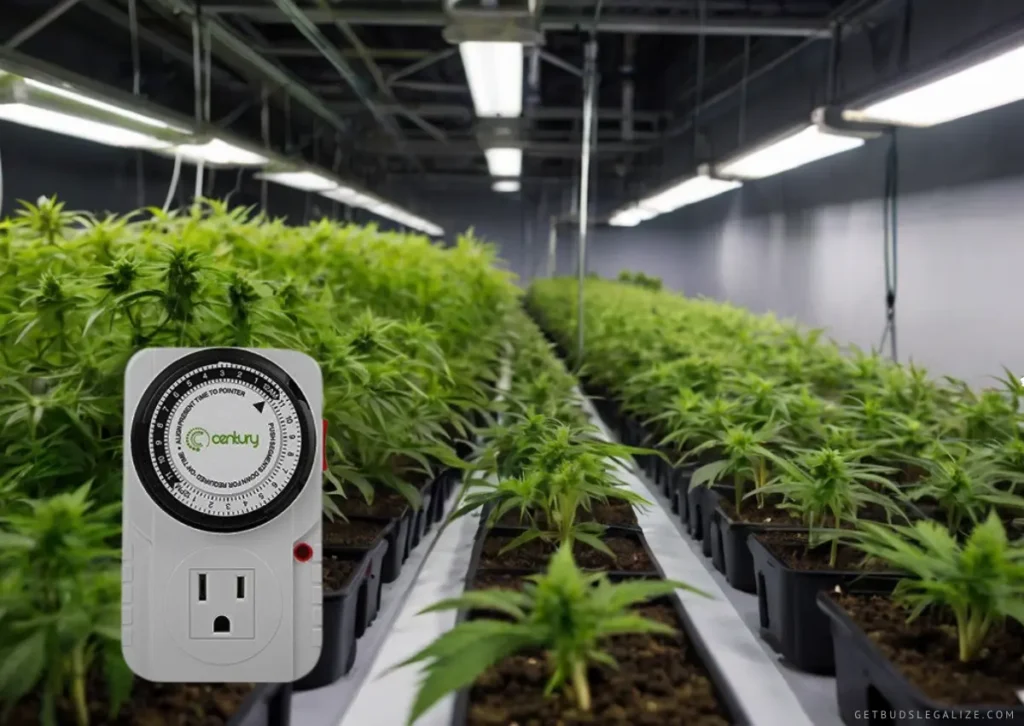
6. Ignoring Reservoir Temperature Regulation
Nutrient reservoir temperature plays a crucial role in the health and vitality of hydroponic marijuana plants. Extreme temperatures can stress plants and provide favorable conditions for pathogen growth.
Try to maintain a constant tank temperature of around 20 degrees Celsius by using an aquarium heater. This temperature range provides optimal conditions for root health while minimizing the risk of pathogen contamination.
7. Utilizing Dense Organic Nutrients
A common mistake made by many growers is to use dense organic nutrients in hydroponic systems designed for synthetic fertilizers. Organic nutrients have larger particles than synthetic nutrients, which can lead to blockages in drip lines and pumps. Over time, this can create an environment in which aerobic bacteria can thrive, potentially causing tank contamination and attracting parasites.
Manufacturers design hydroponic nutrients so that they can be easily absorbed by plants in systems such as drip irrigation, deep water culture, or NFT. Using organic nutrients in these systems can disrupt nutrient flow, affecting plant health and growth. It is recommended to use nutrients specially formulated for hydroponic systems to avoid any clogs or other related problems.
8. Insufficient Maintenance
Another common mistake is neglecting maintenance tasks, leading to clogged drip lines. Drip irrigation systems rely on a steady flow of nutrient solutions to deliver essential nutrients to plants. However, without regular maintenance, drip lines can become clogged with sediment, algae, or organic matter, disrupting nutrient delivery and potentially harming plant health.
To prevent clogged drip lines, schedule regular maintenance tasks such as flushing the system, cleaning drip lines, and inspecting for any signs of blockages. By maintaining a clean and well-functioning hydroponic system, you can ensure optimal nutrient delivery and promote healthy plant growth.
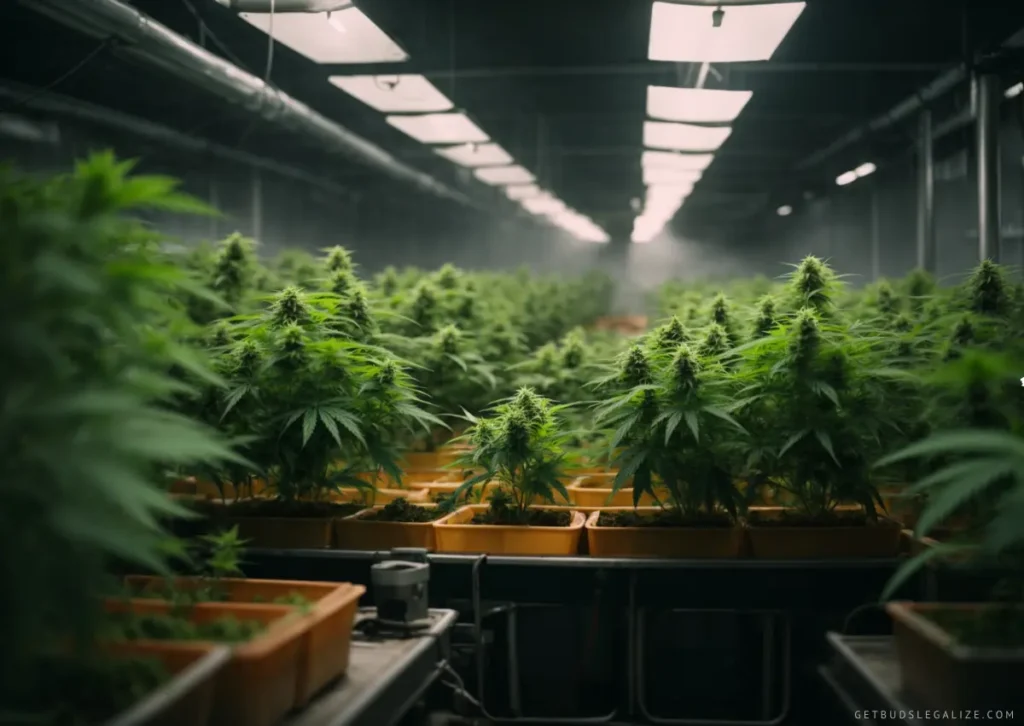
9. Neglecting Flushing Procedures
Flushing is a crucial step in hydroponic marijuana growing that is often overlooked by growers. The flush allows plants to use their internal reserves of nutrients and minerals, resulting in flowers with a smoother flavor and richer colors. Without proper Flushing, residual nutrients can accumulate in plant tissues, affecting the flavor and quality of the final product.
During the flushing period, which typically lasts about 14 days, enzymes can be used to speed up the breakdown of undissolved salts and aid in the absorption of nutrients. This process allows the plants to fully utilize the nutrients, resulting in clean burning and superior flavor.
10. Excessive Defoliation
Defoliation can be beneficial if done correctly. However, excessive defoliation or removing too many leaves at one time can stress the plant and negatively impact growth and yield.
As a general rule, avoid removing more than 25% of the plant’s foliage at one time, and always use sharp scissors to make clean cuts. New growers should use caution when defoliating and refrain from extreme techniques such as “schwazzing”, especially with autoflowering cannabis strains, which may not recover well from the stress of defoliation.
When in doubt, err on the side of caution and remove leaves only sparingly to avoid stunting plant growth.
11. Entering the Room During Lights-Out Periods
It’s natural to want to check your plants frequently, especially during the early stages of growth. However, entering your grow room or tent with the lights off can have disastrous consequences. Even brief exposure to light during the dark cycle can disrupt the plant’s photoperiod and trigger hormonal imbalances, potentially leading to problems such as hermaphroditism.
Hermaphroditic plants develop both male and female sex organs, which can result in self-pollination and a significant decrease in flower quality and potency.
To avoid light leaks and minimize the risk of hermaphroditism, avoid entering the grow space during the dark cycle and invest in light-isolating measures such as light traps and blackout curtains.
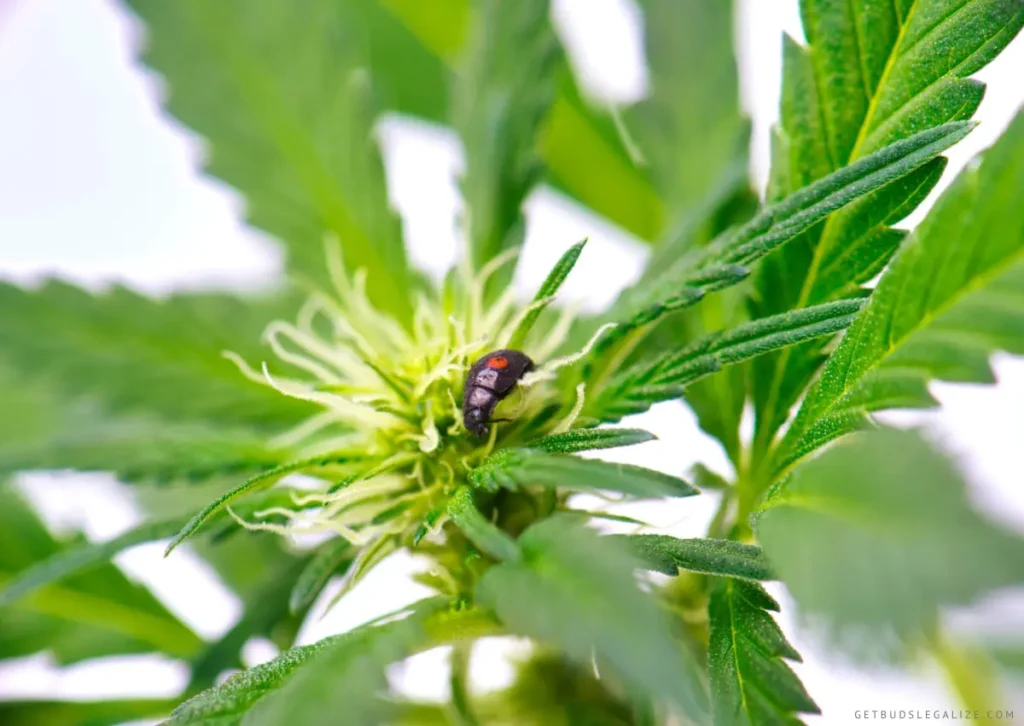
12. Neglecting Pest and Disease Management
Pests and diseases pose a significant threat to marijuana plants, and neglecting proper management can lead to devastating consequences. Common pests such as red spiders, aphids, and whiteflies can quickly infest hydroponic systems and wreak havoc on plants. Likewise, diseases such as powdery mildew and root rot can spread rapidly in hydroponic environments if left uncontrolled.
To avoid pest and disease problems, growers should implement proactive measures such as regularly inspecting plants for signs of infestation, maintaining a clean growing environment, and using organic pesticides and fungicides when necessary.
Additionally, practicing good hygiene, such as sterilizing equipment and washing your hands before handling plants, can help prevent the introduction and spread of pests and diseases.
Conclusion:
By avoiding these 12 critical mistakes and implementing best practices in your hydroponic cultivation, you can optimize plant health, maximize yields, and achieve success in your growth endeavors.
Remember to prioritize proper pH management, nutrient balance, and environmental control to ensure the best possible outcomes. Happy growing!
FAQs about Growing Hydroponic Marijuana
Hydroponic is a method of cultivating plants without soil, using a nutrient-rich water solution to deliver essential nutrients directly to the plant roots.
Yes, hydroponic cultivation is popular among growers due to its potential for faster growth, higher yields, and precise nutrient control.
Growing hydroponic marijuana offers several advantages, especially for those interested in maximizing yields and efficiency. Here are some key benefits:
- Faster Growth: Hydroponic systems provide plants with direct access to nutrients, allowing them to grow faster compared to traditional soil cultivation. With precise control over nutrient delivery, hydroponic marijuana plants can develop more rapidly, leading to shorter vegetative periods and quicker harvests.
- Increased Yields: Hydroponic systems optimize nutrient uptake, water distribution, and oxygenation of the root zone, resulting in larger and more abundant yields compared to soil-based growing methods. By providing plants with precisely tailored nutrient solutions, growers can maximize the potential of their cannabis crops and achieve higher yields per square foot of growing space.
- Water Efficiency: Hydroponic systems are highly water-efficient, as they recirculate nutrient solutions rather than relying on soil to retain moisture. This allows growers to conserve water resources and minimize waste, making hydroponic cultivation a more sustainable option, particularly in regions with limited water availability.
- Space Utilization: Hydroponic systems can be tailored to fit almost any indoor or outdoor space, making them ideal for urban environments or areas with limited land availability. Vertical farming techniques, such as vertical towers or stacked systems, further optimize space utilization, allowing growers to maximize their production capacity in small areas.
- Precise Nutrient Control: Hydroponic systems enable growers to precisely control the nutrient composition and concentration of the growing solution, ensuring that plants receive the optimal balance of essential nutrients at each stage of growth. This level of control minimizes the risk of nutrient deficiencies or toxicities, resulting in healthier, more vigorous plants.
- Reduced Pest and Disease Risk: Because hydroponic systems eliminate the need for soil, they also reduce the risk of soil-borne pests and diseases that can harm cannabis plants. By cultivating in a soilless medium, growers can create a cleaner and more sterile growing environment, minimizing the likelihood of pest infestations and fungal infections.
Several growing media are suitable for growing in hydroponic systems, each with its advantages and considerations. Here are some popular options:
- Rockwool: This is a popular choice for hydroponics due to its excellent aeration properties and water retention. It provides a stable structure for plant roots and allows for good drainage and airflow. Rockwool cubes or slabs are commonly used for germinating seeds or rooting clones in hydroponics.
- Clay-pebbles (Hydroton): These are lightweight, inert, and pH-neutral, making them an excellent medium for hydroponics. They provide good drainage and aeration, promoting healthy root development and preventing waterlogging. Clay-pebbles are commonly used in flood and drain (ebb and flow) systems and as a top layer in DWC systems.
- Coco coir: This is a natural, renewable growing media made from coconut husks. It has excellent water retention and aeration properties, making it ideal for cannabis cultivation. Coco coir also contains beneficial microbes and nutrients that promote healthy root growth and microbial activity in the root zone. It’s commonly used in drip systems, DWC systems, and as a component of soilless blends.
- Perlite: Perlite is a lightweight, volcanic rock material that is commonly used as a soil amendment and hydroponic growing media. It provides excellent drainage and aeration, preventing compaction and promoting healthy root development. Perlite is often used in combination with other growing media, such as coco coir or peat moss, to improve water retention and structure.
- Vermiculite: This is a mineral-based growing media that offers good water retention and aeration properties. It’s commonly used in hydroponic systems to improve moisture retention and promote root growth. Vermiculite is often used in combination with other growing media, such as perlite or coco coir, to create a well-balanced growing medium.
- Expanded clay pellets (LECA): Expanded clay pellets, also known as lightweight expanded clay aggregate (LECA), are lightweight, inert, and pH-neutral. They provide good drainage and aeration, promoting healthy root development and preventing waterlogging. Expanded clay pellets are commonly used in flood and drain (ebb and flow) systems and as a top layer in DWC systems.
Ultimately, the best-growing media for growing cannabis in hydroponic systems depends on factors such as the type of hydroponic system, the specific needs of the cannabis cultivars, and personal preferences. It’s essential to choose a growing media that provides good water retention, aeration, and support for healthy root growth, while also being compatible with the chosen hydroponic system and cultivation methods.
Yes, you will need special lights to effectively grow your plants in a hydroponic system. The type of lights you choose will have a significant impact on the growth, health, and yield of your marijuana plants. Here are some common types of lights used:
- LED Grow Lights: LED (Light Emitting Diode) lights are becoming increasingly popular among hydroponic cannabis growers. They are energy-efficient, produce less heat, and offer a wide spectrum of light suitable for all stages of plant growth, from vegetative growth to flowering. LED lights can be customized to provide specific wavelengths of light optimized for your cultivation, promoting healthy growth and maximizing yields.
- HPS (High-Pressure Sodium) Lights: HPS lights have been a staple in indoor cultivation for many years. They emit a spectrum of light that is particularly well-suited for the flowering stage of cannabis, promoting robust bud development and increased resin production. HPS lights are less energy-efficient and produce more heat compared to LED lights, but they remain a popular choice for flowering marijuana plants in hydroponics.
- MH (Metal Halide) Lights: MH lights emit a spectrum of light that is rich in blue wavelengths, making them ideal for promoting vegetative growth and healthy foliage development in cannabis. They are often used in combination with HPS lights, with MH lights being used during the vegetative stage and HPS lights during the flowering stage.
- Fluorescent Lights: Fluorescent grow lights, such as T5 or CFL (Compact Fluorescent Lamp) lights, are suitable for smaller-scale hydroponic setups or for supplementing other types of lights. They are energy-efficient, produce less heat, and provide a balanced spectrum of light that is suitable for both vegetative growth and flowering stages.
- CMH (Ceramic Metal Halide) Lights: CMH lights offer a full spectrum of light that closely mimics natural sunlight, making them an excellent choice for all stages of cannabis growth. They are energy-efficient, produce less heat than traditional HPS lights, and promote healthy plant growth and robust flowering.
When selecting lights for your hydroponic setup, consider factors such as the size of your grow space, the specific needs of your cannabis cultivars, and your budget. It’s essential to provide the right intensity and spectrum of light to ensure healthy growth and maximize yields throughout all stages of cannabis growth.
Yes, you can. However, it’s essential to ensure that the environment is suitable for germination and that the seeds receive adequate moisture, warmth, and oxygen.
Here’s a general guide to germinating your seeds incorrectly:
- Start with clean, sterile equipment: Ensure that all equipment, including your hydroponic system components are thoroughly cleaned and sterilized to prevent the introduction of harmful pathogens.
- Choose a germination method: There are several methods for germinating your seeds, including using paper towels, germination cubes, or directly planting in a growing media. Choose the method that works best for your hydroponic system setup.
- Prepare your hydroponic system: Fill your hydroponic system with the appropriate nutrient solution for seedlings. Ensure that the pH level of the solution is within the optimal range for germination (usually around 5.5 to 6.5).
- Germinate the seeds: Place your cannabis seeds in the chosen germination method and keep them warm (around 70-85°F or 21-29°C) and moist. Check regularly for signs of germination, which typically occurs within 1-7 days.
- Transfer germinated seeds to the hydroponic system: Once the seeds have sprouted and developed a small taproot, carefully transfer them to your hydroponic system. Gently place the seeds into the growing media, ensuring that the taproot is facing downward.
- Provide appropriate lighting: After transferring the germinated seeds to the hydroponic system, ensure that they receive adequate lighting. Adjust the intensity and duration of the light according to the needs of seedlings.
- Monitor and maintain: Keep a close eye on your germinating seeds and seedlings, ensuring that they receive proper hydration, nutrition, and environmental conditions. Adjust nutrient levels, pH, and other parameters as needed to support healthy growth.
Growing in Hydroponic is often faster than growing in soil due to the direct delivery of nutrients to the roots, resulting in accelerated growth rates and larger yields.
Yes, you can. While hydroponic systems typically use synthetic nutrient solutions, it’s possible to cultivate organic weed by using organic-certified nutrients and supplements specifically formulated for hydroponic use.
Here are some important things to keep in mind:
- Organic-certified nutrients: Look for nutrient solutions and supplements that are certified organic by reputable organizations. These products are formulated using natural, organic ingredients without synthetic additives or chemicals.
- Organic growing media: Choose an organic-approved growing media for your hydroponic system, such as coco coir, compost-based substrates, or peat moss. These mediums provide a natural environment for plant roots while allowing for efficient nutrient uptake.
- Biological additives: Incorporate beneficial microbes, mycorrhizae, and other biological additives into your hydroponic system to enhance nutrient availability, improve soil structure, and support overall plant health. These microbial communities play a vital role in organic cultivation practices.
- Compost teas: Brew organic compost teas using compost, worm castings, and other organic materials to provide a rich source of beneficial microorganisms, nutrients, and enzymes to your hydroponic plants. Compost teas can help promote soil microbial activity and enhance nutrient cycling in the root zone.
- Organic pest and disease management: Implement organic pest control methods, such as companion planting, beneficial insects, and natural repellents, to manage pests and diseases in your hydroponic garden. Avoid synthetic pesticides and fungicides, opting instead for organic-approved alternatives.
- Maintain organic integrity: To ensure that your hydroponically-grown cannabis remains organic, it’s essential to follow organic growing practices and use only certified organic inputs throughout the cultivation process. Keep detailed records of your inputs and cultivation practices to demonstrate compliance with organic standards.
Setting up a grow tent for hydroponic cannabis requires careful planning and attention to detail to create an optimal growing environment for your plants. Here is a detailed guide to assist you in beginning:
- Choose the Right Location: Select a suitable location for your grow tent, ensuring it has adequate space, ventilation, and access to electricity. Consider factors such as temperature, humidity, and light exposure when choosing the location.
- Assemble the Grow Tent: Assemble the grow tent frame and install the fabric cover by following the manufacturer’s instructions. Ensure that the tent is securely assembled and stable before proceeding.
- Install Ventilation System: Set up a ventilation system to ensure proper air circulation and temperature control inside the grow tent. Install exhaust fans, intake fans, and ducting as needed to maintain optimal airflow and temperature levels.
- Hang Grow-Lights: Hang grow-lights inside the grow tent to provide the necessary light intensity and spectrum for cannabis growth. Position the lights at the appropriate height above the plants, following manufacturer recommendations based on the type of lights used.
- Set Up Hydroponic System: Install your chosen hydroponic system inside the grow tent, whether it’s DWC, NFT, ebb and flow, or another system type. Ensure that the system is properly connected to water and nutrient reservoirs and that all components are functioning correctly.
- Choose Growing Media: Select a suitable growing media for your hydroponic system, such as rockwool cubes, clay pebbles, or coco coir. Prepare the growing media according to manufacturer instructions and fill your hydroponic trays or containers.
- Plant Cannabis Seedlings or Cuttings: Once your hydroponic system and growing medium are set up, plant cannabis seedlings or cuttings in the designated growing sites. Ensure that the plants are positioned correctly and have ample space to grow.
- Monitor Environmental Conditions: Regularly monitor temperature, humidity, light intensity, and nutrient levels inside the grow tent using appropriate meters and sensors. Adjust environmental conditions as needed to maintain optimal growing conditions for your cannabis plants.
- Maintain Hygiene and Pest Control: Keep the grow tent clean and free from pests and pathogens by regularly sanitizing equipment, trimming plants, and inspecting for signs of infestation or disease. Implement preventive measures such as using organic pesticides or beneficial insects to control pests.
While hydroponic growing offers many benefits, it also requires careful monitoring and maintenance to prevent issues such as nutrient imbalances, root rot, and system failures.
Successful hydroponic cultivation requires attention to detail, proper planning, and consistent maintenance. Here are some best practices to ensure success:
- Start with a clean and well-designed system: Begin with a clean hydroponic system and ensure that it’s properly designed for weed growth. Choose a suitable system type (e.g., DWC, NFT, ebb and flow) based on your space, resources, and expertise.
- Use quality nutrient solutions: Invest in high-quality, pH-balanced nutrient solutions formulated specifically for marijuana growth. Follow manufacturer recommendations for nutrient ratios and application rates.
- Monitor and control environmental factors: Regularly monitor and maintain optimal environmental conditions, including temperature, humidity, CO2 levels, and airflow. Keep environmental parameters within the ideal range for cannabis growth to promote healthy plants and maximize yields.
- Ensure proper lighting: Choose appropriate lights for growing cannabis, such as LED, HPS, or MH, to provide the right spectrum and intensity for each stage of cannabis growth. Follow recommended light cycles (18/6 for the vegetative stage, 12/12 for the flowering stage) and adjust lighting height and intensity as needed.
- Maintain pH and nutrient levels: Regularly check and adjust the pH level of your nutrient solution to ensure optimal nutrient uptake by your plants. Monitor nutrient levels and replenish as needed to prevent deficiencies or imbalances.
- Implement a robust pest and disease management plan: Prevent pests and diseases by maintaining a clean growing environment, practicing good hygiene, and using organic pest control methods when necessary. Regularly inspect plants for signs of pests or diseases and take prompt action to address any issues.
- Prune and train plants for optimal growth: Prune your plants to remove dead or damaged foliage and promote better airflow and light penetration. Consider using training techniques such as topping, low-stress training (LST), or scrogging to maximize yields and canopy uniformity.
- Regularly monitor and adjust nutrient and water levels: Keep a close eye on nutrient solution levels, pH, and water temperature in your hydroponic system. Monitor plant health and growth rates and adjust nutrient levels, water volume, and pH as needed to support vigorous growth and development.
- Harvest at the right time: Harvest your cannabis plants when trichomes are milky or amber in color and THC levels are at their peak. Use a magnifying tool to inspect trichomes and determine the optimal harvest time for each cultivar.
- Document and learn from your experiences: Keep detailed records of your cultivation practices, including nutrient schedules, environmental conditions, pest management strategies, and harvest results. Use this information to identify trends, troubleshoot problems, and refine your growing techniques over time.
ILGM Fertilizer

- From seedling to harvest, give your plants everything they need.
- Enough for feeding at least 5 plants.
- Discounted Package Deal
- Works well in soil, hydroponics, and other growing mediums.
- The best way to treat your plants
ILGM Plant Protector

- Protect your cannabis from diseases and harmful pests.
- Contains three 20 ml bottles.
- Enough supplies to protect 20 plants.
- It can be used in soil, hydroponic, and all other growing mediums.




